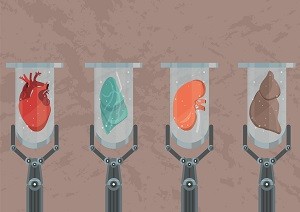 The Editors of BMC Biomedical Engineering and BMC Biotechnology announce the launch and call for research articles on Tissue Engineering.
The Editors of BMC Biomedical Engineering and BMC Biotechnology announce the launch and call for research articles on Tissue Engineering.
Tissue engineering brings together multiple aspects of science, medicine and engineering. It starts from using cells as building blocks on scaffolds to large scale whole structures towards medicinal use. Scientific advances in biomaterials, stem cells, growth and differentiation factors, and biomimetic environments have created unique opportunities to fabricate or improve regenerative engineering. Different laboratories use combinations of engineered extracellular matrices ("scaffolds"), cells, and biologically active molecules to mimic the in vivo conditions. Among the major challenges now facing tissue engineering is the need for more complex functionality, biomechanical stability, and vascularization in laboratory-grown tissues destined for transplantation. There are also very few stringent protocols to judge the immunogenicity of different implantable biomaterials and extracellular matrices. The role of circulating monocytes and resident macrophages after implantation is still not completely understood, which makes the outcome more unpredictable. At this brink of breakthrough research, BMC Biotechnology and BMC Biomedical Engineering welcome submissions to their collection on Tissue engineering. The use of biomaterials in regenerative medicine for development of multiple lineages and specific organs will be covered. The special issue will consider different types of natural and synthetic biomaterial use for regenerative purposes. Innovative research on extracellular matrix and stem cells responsive biomaterials are welcome. Recent advancement and greater challenges in biomaterial mediated drug or small molecule delivery, additive manufacturing will be the major thrust here.
The broad areas of research covered by this collection include:
- Advances in tissue culture including bio-reactors and bio-artificial organs.
- Advances and developments in tissue assembly methods including techniques like 3D scaffolding and hydrogels
- Bioprinting, nanofibres and nanomaterials
- stem-cell -use in regenerative medicine
- Isolation and purification of primary cells towards application
- Lab-grown organs and tissues
- Biomaterials in drug or small molecule delivery, Additive Manufacturing
- Extracellular matrix, decellularization
- Biodegradable nanomaterials including nano-polymers
- Computational modeling in tissue engineering
The Editors of BMC Biomedical Engineering and BMC Biotechnology welcomed submissions to our Cross-Journal Collection on Tissue Engineering. The collection aimed to cover advances in biomaterials, stem cells, growth and differentiation factors, and biomimetic environments which are creating unique opportunities to fabricate or improve organic tissue engineering.

